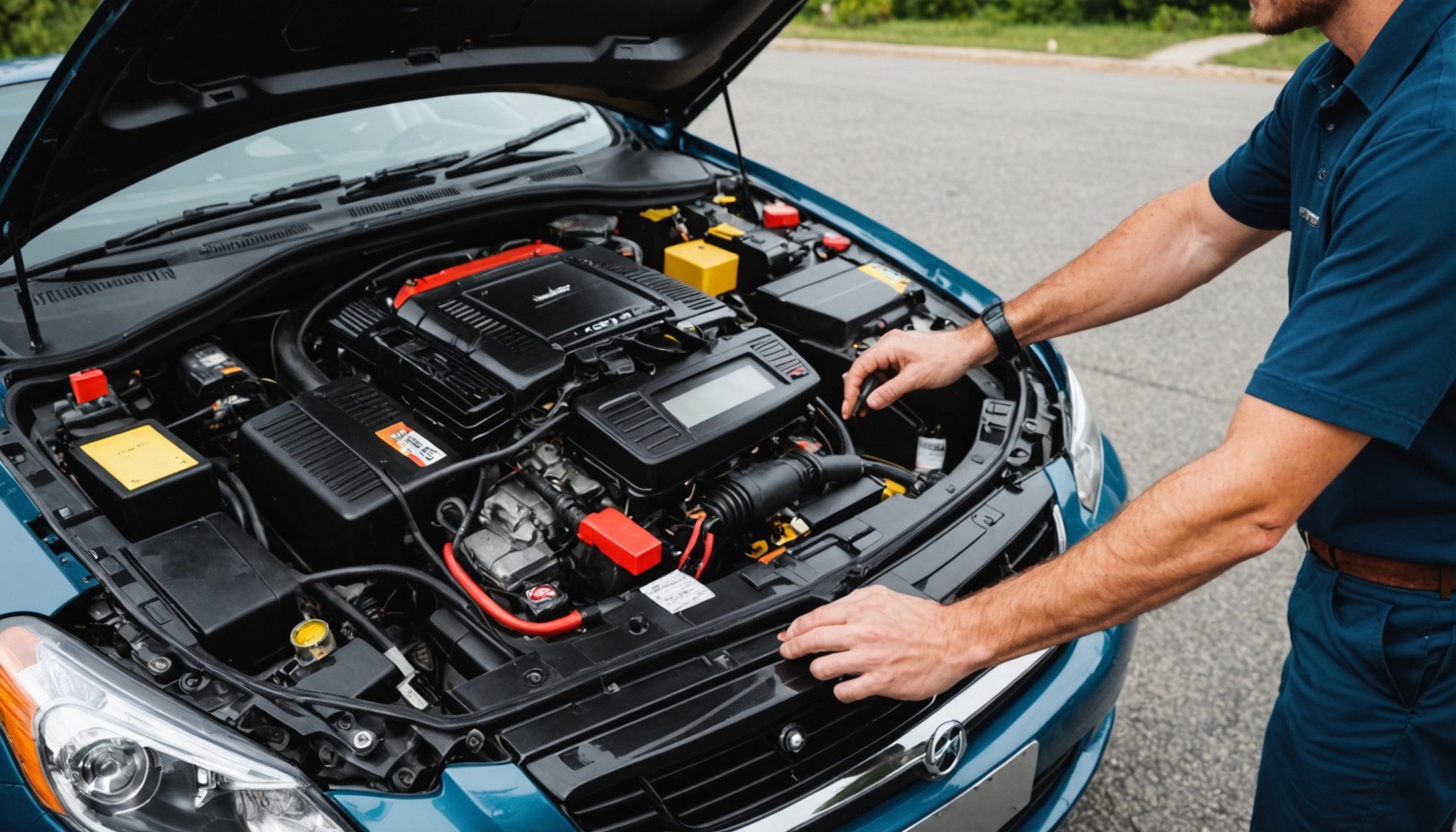Jump-starting a vehicle can seem daunting, especially when you’re faced with a dead battery. However, understanding the correct procedure can save you time and prevent damage to your vehicle’s electrical system. Whether you are a seasoned driver or a novice, knowing how to properly jump-start a car is essential. This guide will walk you through the steps, ensuring you can safely start your vehicle while avoiding potential pitfalls that could harm your engine.
Understanding the Components of a Jump Start
Before you dive into the process of jump-starting a car, let’s break down the essential components involved. Understanding these elements will help you execute the task efficiently and safely.
Have you seen this : What are the advantages of regular engine diagnostics for car owners?
The first item to consider is the battery itself. A car battery typically has two terminals: the positive terminal, usually marked with a red cover and a ‘+’ symbol, and the negative terminal, usually marked with a black cover and a ‘-’ symbol. When jump-starting a vehicle, you need to connect your starting cables correctly to avoid any electrical issues.
Next, you’ll need jumper cables. These come with two clamps on each end – one red for the positive terminal and one black for the negative terminal. The quality of jumper cables is crucial; thicker cables generally allow more current to flow, which is beneficial if your battery is significantly drained.
Also to see : What are the important factors to consider when selecting car tires for different seasons?
When you decide to jump-start your vehicle, ensure the other vehicle you’re using has a working battery. This vehicle provides the power needed to revive your engine. Additionally, knowing the location of each vehicle’s battery is helpful. In some models, the battery might be tucked away under other components or in the trunk.
Finally, familiarize yourself with the starter system of your vehicle. The starter is what engages when you turn the ignition key, and when a battery is dead, the starter cannot function without a power source. Understanding this connection will help you comprehend why jump-starting is a necessity in certain situations.
Preparing for the Jump Start
Once you understand the components involved, it’s time to prepare for the jump-start itself. Preparation is key to ensuring that the process goes smoothly and safely.
First, gather your materials. You’ll need a set of jumper cables and another vehicle with a fully charged battery. Ensure that both vehicles are parked close enough for the cables to reach but do not let them touch each other. Turn off both vehicles and remove the keys from the ignitions to eliminate any risk of accidental movement.
Next, inspect the batteries of both vehicles. Check for any signs of damage, corrosion, or leaks. If the battery has any of these issues, jumping it might cause further problems. In such cases, replacement of the battery is necessary. If everything looks good, identify the positive and negative terminals on both batteries. Remember, connecting the clamps incorrectly can lead to electrical system damage.
When you’re ready to connect the cables, make sure you have the order of operations clear in your mind. The correct sequence is essential to prevent any accidents. Begin by connecting the red jumper clamp to the positive terminal of the dead battery. Then, attach the other end of the red clamp to the positive terminal of the charged battery. After this, connect one end of the black cable to the negative terminal of the charged battery. Finally, attach the other end of the black cable to an unpainted metal surface on the vehicle with the dead battery, away from the battery itself. This last step helps prevent sparks from igniting any gases that may have escaped from the battery during the jump.
Executing the Jump Start
Now that you’ve prepared everything, it’s time to jump-start your car. This is where the actual starting takes place, and following the steps precisely will ensure that everything goes according to plan.
After connecting the jumper cables as previously described, you can start the vehicle with the charged battery first. Allow it to run for a few minutes. This action helps to charge the dead battery slightly and primes the electrical system for the next step. While it’s running, keep an eye on the connections. Ensure the clamps remain secure and that there are no sparks or unusual sounds.
Once the charged vehicle has been running for a couple of minutes, attempt to start the vehicle with the dead battery. Turn the ignition key to the starter position. If your car starts, allow it to run for a while to recharge the battery further. If it doesn’t start, wait a few more minutes before trying again. Should it still fail to start after several attempts, there may be a deeper issue with your battery or engine that requires professional assistance.
If your vehicle successfully starts, leave it running for at least 15-20 minutes. This step helps to recharge the battery sufficiently. After allowing your vehicle to run, you can begin to disconnect the jumper cables in reverse order of connection: first remove the black clamp from the metal surface on the vehicle with the dead battery, then from the charged battery. Next, remove the red clamp from the charged battery, and finally, detach the red clamp from the dead battery. This order helps prevent any potential short-circuits or electrical damage.
Post Jump-Start Care
Once you have successfully jumped your car and it is running, it’s vital to take care of your vehicle to prevent future issues with the battery or electrical system.
Firstly, let your car run for a while longer, ideally at least 30 minutes. This ensures that the battery receives adequate charge from the alternator. If your vehicle dies again shortly after the jump, it may indicate that your battery is too old or damaged and requires replacement.
Next, consider having your battery and electrical system checked by a professional. They can test the battery to see if it holds a charge properly and determine if there are any underlying issues with the starter or alternator. Regular maintenance can go a long way in preventing frustrating situations in the future.
Furthermore, if you find yourself frequently jump-starting your vehicle, it may be time to invest in a new battery. Keep in mind that most car batteries have a lifespan of about 3 to 5 years, depending on the usage and conditions. A new battery can save you from the hassle of jump-starting and ensure that your vehicle runs smoothly.
Lastly, consider carrying a portable jump starter in your vehicle. This device can be invaluable in emergencies, especially if you find yourself without another vehicle nearby. Portable jump starters are compact, easy to use, and provide a reliable solution for getting your car back up and running.
Jump-starting a vehicle doesn’t have to be intimidating. By following the steps outlined in this guide, you can safely and effectively bring your car back to life without risking damage to your electrical system. Remember, preparation is key, and understanding how your vehicle’s battery and electrical components work will make the process smoother.
Should you ever find yourself with a dead battery, know that with the right tools and knowledge, you can jump-start your engine and get back on the road. Regular maintenance and awareness of your battery’s health will further ensure that you avoid this situation in the future. Stay informed, and drive safely!











